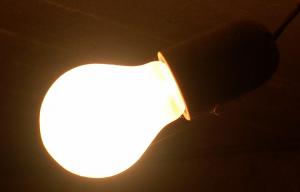- 5 reads

New Standards Promise Cheaper Light and Fewer Emissions
The horse-and-buggy era light bulb we still rely on wastes up to 90 percent of the electricity it consumes as heat, burning up hundreds of dollars every year in each American household and increasing air pollution that harms human health and the environment. In 2007, the U.S. Congress adopted energy efficiency standards for new screw-based light bulbs. Beginning in 2012, these standards will phase out the inefficient incandescent light bulb that dates back more than 125 years, and require new bulbs to use 25 to 30 percent less energy. The transition to more efficient light bulbs will provide massive consumer, public health, and economic benefits, including:
- savings of $100 to $200 plus per year in the form of lower electric bills in each American household;
- energy savings equivalent to 30 large power plants; and
- reductions in carbon pollution of approximately 100 million tons of carbon dioxide (CO2) per year, which is equivalent to the annual carbon pollution from more than 17 million cars.
Replacing all the nation's inefficient bulbs with energy efficient ones will save as much electricity annually as that consumed by all the homes in Texas.
How will this affect what I can buy?
Consumers will continue to have a wide selection of light bulbs from which to choose. These will include new high-efficiency incandescent light bulbs that look just like today's ordinary light bulbs, compact fluorescent light bulbs (CFLs), and light emitting diodes (LEDs). All these types of bulbs are already widely available at leading retailers such as Home Depot, Lowes, and Wal-mart, as well as most local hardware stores.
These new bulbs will also save consumers money. While some of the newer and more efficient bulbs may cost more to buy, they will save the consumer more in the long run. For example, because these bulbs last longer and are so much more efficient, a single CFL can save $30 or more in electricity over its lifetime.
Are CFLs a good choice?
Today, CFLs represent the best value for consumers as they use one-fourth the power of a comparable incandescent light bulb and last up to 10 times longer. As a result, each CFL will save the consumer at least $30 in the form of lower electricity costs over the life of the bulb. The new improved incandescents will save much less, but some consumers may still prefer to stick with products with which they are most familiar.
Will I have to buy a CFL?
No. A wide range of products meeting the technology-neutral standards are already on the market. These include CFLs, more efficient incandescents that use halogen technology, and LEDs -- all of which are available from multiple manufacturers. Product offerings will only increase as the implementation date of the new standards approaches. Consumers will have their pick of multiple energy-efficient options.
Are today's LED bulbs ready to work as substitutes for incandescents?
LED bulbs are a rapidly emerging substitute for incandescents. These LEDs can last up to 25 years and are at least 75 percent more efficient than current incandescent bulbs. While these bulbs currently cost more than CFLs and high efficiency incandescents (approx. $10-$30 per bulb), their price is expected to quickly drop as technology improves and supply and use of the bulbs increase.
How do the new Federal Standards work?
Congress enacted the lighting standards in the Energy Independence Act of 2007. The rules phase out inefficient light bulbs in a technology-neutral way. In other words, the rules don't specifically ban incandescents. Nor do they specify LEDs or CFLs as replacements. The rules simply set efficiency targets that come on line in two steps, first in 2012 then again in 2020.
Beginning in 2012, common household bulbs must use 30 percent less power. That means today's incandescents (which convert only 10 percent of the electricity they consume into light -- the rest is given off as heat) don't pass the new code. Today's incandescent 60-watt bulb puts out about 900 lumens (a measure of the amount of light produced), or about 15 lumens of light per watt of electricity. The 2012 standards calls for bulbs of around 20 lumens per watt or better. By 2020, the rules call for a further improvement in efficiency, to about 45 lumens per watt, about three times more efficient than today's bulbs. That's about the efficiency of a CFL today.
For the original article via NRDC.org click here.

